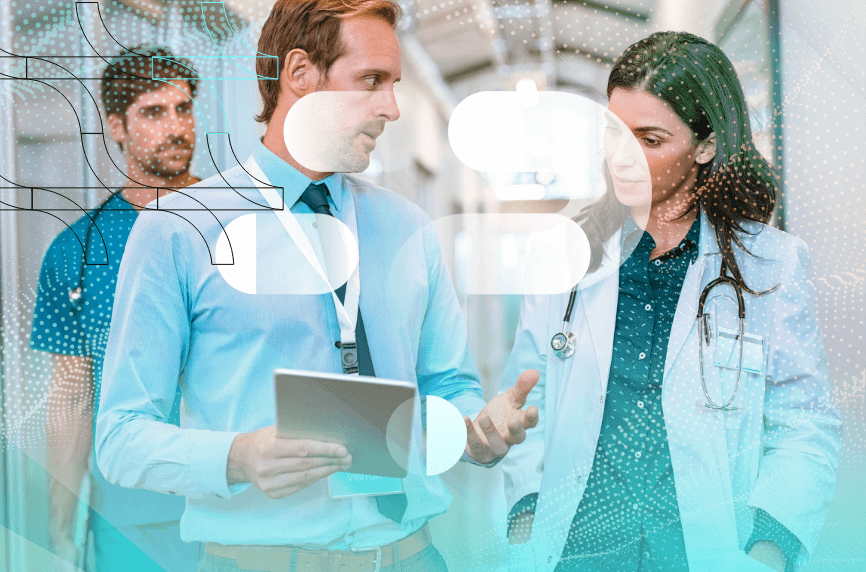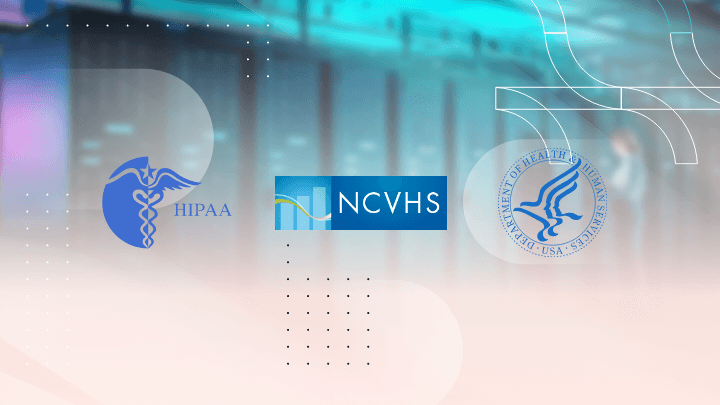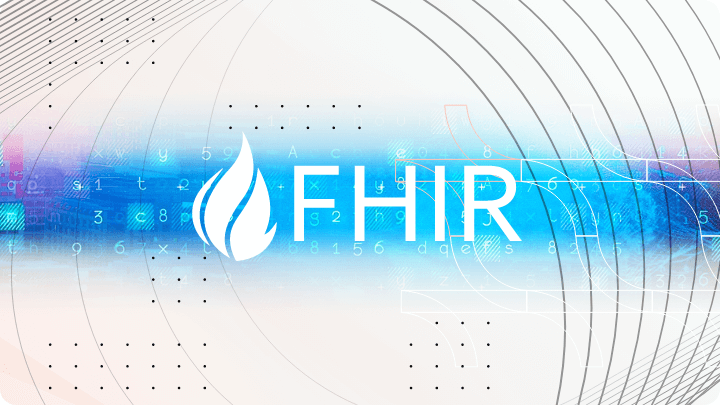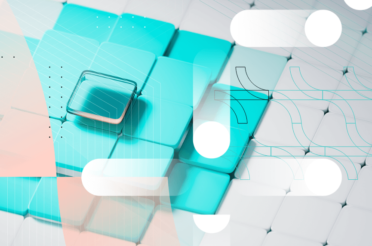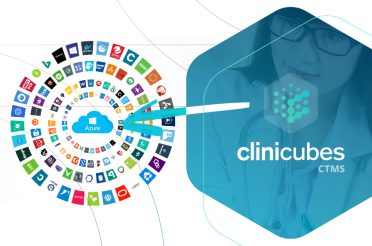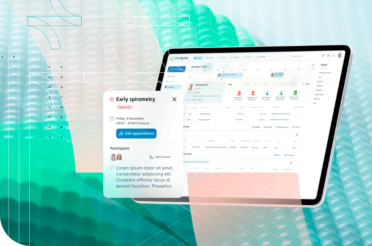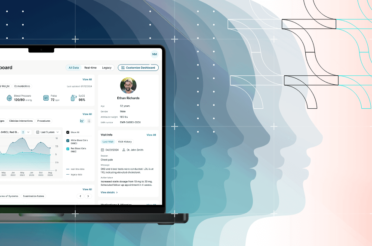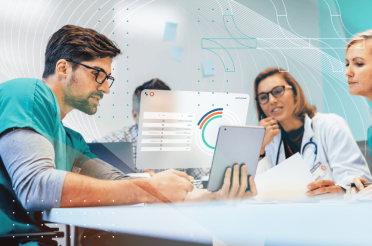In the current digital era, data privacy is an important aspect of every field of life. In the healthcare system, the need for privacy is even greater considering the extensive use of personal health information (PHI) in electronic form.
Storage of personal health records in the form of electronic health records (EHRs) and the application of telemedicine services makes the sensitive data protection of patient’s health information more difficult.
So what is patient data privacy in healthcare exactly and how can we maintain it?
Understanding data privacy in healthcare
The digitization of health and human services is transforming patient data management. Demographic shifts, behavioral trends, and widespread access to mobile phones and applications are driving this shift. These changes have heightened expectations for better clinical decision-making, enhanced health service delivery, improved disease monitoring and control, and more effective treatments.
These trends have led many healthcare organizations to recognize that traditional, reactive methods of securing personal health information are inadequate. As a result, they now seek new systems and strategies to prevent classified information compromises and security breaches. [1]
Regulatory framework for data privacy
In the United States, The Health Insurance Portability and Accountability Act, largely referred to as HIPAA, has been crucial in the growth of standards for electronic health records and the safeguarding of patients’ health information.
Its structure has two principal components – the HIPAA Privacy Rule and the Security Rule which both have an aspect of concern regarding personal health data.
The privacy rule seeks to ensure that health information is not inappropriately used or disclosed. Moreover, it allows information’s use in treatment, payment, and administrative health care operations and even for medical research and health surveillance purposes. It advocates for the need to protect privacy and the need to exchange information as a way of enhancing healthcare delivery.
As stated before, the Security Rule sets forth minimum standards – administrative, physical, and technical – aimed at safeguarding health information technology against hazards such as hacking.
Since that time, however, cyber threats have surged, underscoring the need for HIPAA safeguards that protect both covered entities and patients. HIPAA has established a flexible framework that allows for the handling and sharing of Protected Health Information (PHI) while upholding strict privacy standards.
The National Committee on Vital and Health Statistics (NCVHS) has recognized several relevant examples of health information utilization that fall outside the scope of HIPAA. They concentrated on the identifiable health information received by entities, such as private disease registries, which do not have shareable information-securing mechanisms in place. Covered entities typically use business associate agreements or data-sharing agreements to prevent unauthorized disclosure of medical data. However, many registries do not follow this practice.
Chronic disease management devices and personal health monitoring equipment also play a role in data security. However, their use does not guarantee privacy or safety. These devices often do not connect directly to electronic medical records and may not operate as business associates under HIPAA. The National Committee on Vital and Health Statistics (NCVHS) has concluded that economic incentives for re-identifying health data highlight the need for stricter privacy and security measures beyond HIPAA, as current practices may create a false sense of security and privacy. [2]
The Health Information Technology for Economic and Clinical Health (HITECH) Act was enacted as part of the American Recovery and Reinvestment Act to encourage the adoption of health information technology and its meaningful use.
Subtitle D of the HITECH Act addresses the privacy and security risks of transmitting health information electronically, by several provisions that enhance both civil and criminal enforcement of the HIPAA regulations. It complements HIPAA and acknowledges its privacy laws. HITECH has also extended the definition of HIPAA thanks to the Omnibus Rule. This extends individual privacy and security provisions of HIPAA/HITECH to business associates.
The EU regulation General Data Protection Regulation (GDPR) establishes comprehensive principles of data protection including health data and other personal data.
The GDPR enhances requirements for data consent and breach notifications. Key provisions include mandatory government notification, the right to access personal information, the right to data erasure (“right to be forgotten”), and data portability. Under GDPR, organizations must obtain explicit consent from individuals, who also have the right to restrict data processing and automated decision-making. [3]
Patient rights and data privacy
Patients’ rights about their health data are regulated by HIPAA. One of the most important rights is the right to access their PHI. Patients can even request a change if they see anything suspicious. The provider, however, may deny this request if it means altering true health information.
Patients have the right to restrict PHI disclosure to certain people. For example, they can choose their family not to be updated about health status, problems, and diagnoses. Also, the patient can state how they want PHI handled and communicated to others. This means that they can request that the healthcare information is not delivered to anyone.
Another important patient right is the right to report HIPAA violations. People can send reports to the Office of Civil Rights (OCR) if they think there is a PHI violation of disclosure and another breach of data privacy regulations. [4]
Best practices for data privacy in healthcare
Data breaches can exist because of violations of medical device security or through employees. This means that there are minimum requirements for medical device security and recommendations for healthcare providers.
Medical devices must be protected with strong passwords and automatic log-offs. All of the portable devices must encrypt data. There is a need for regular updates of the software and antivirus program. Devices’ cybersecurity also includes periodical backup.
Best practice recommendations include background checks of every employee who enters the organization. The system has to have limited access. This access must be granted based on the information needs – for example, nurses may have limited access to PHI compared to doctors. Access also has to be granted after two- or three-factor authentication.
Digital security training may be beneficial for the employees. The system access should be closed every time the employee is absent even if it is for 2 minutes. Audit and monitoring of the activity in the system must be done frequently. Physical security is equally important and should include 24/7 protection of physical servers and equipment. [5]
Secure data storage and transmission
EHR data must be stored and transmitted carefully to protect patients’ privacy. One solution for data storage is to use blockchain. The HL7 FHIR data standard guarantees that EHRs are stored and available across many platforms. A used method is cryptographic public-key encryption. It ensures security and availability.
The blockchain-based model integrates key elements like encryption, decentralized data storage, and peer-to-peer (P2P) communication. In this model, data cannot be modified or deleted once it’s recorded. This makes it ideal for tracking health records. Mechanisms for detecting and responding to malicious threats or policy violations are enabled in the system. [6]
With the expansion of data traffic through the internet, new challenges for transmission occur. Usually, methods such as secure messaging and encrypted emails are commonly employed to facilitate seamless and secure data sharing. Usually, health care providers and organizations use encrypted emails to share patient health information.
There are also application programming interfaces (APIs) that enable real-time data exchange between two healthcare applications. Security and audit trails are a must in this technology, as well as adherence to regulations such as HIPAA. [7]
Access control and user authentication
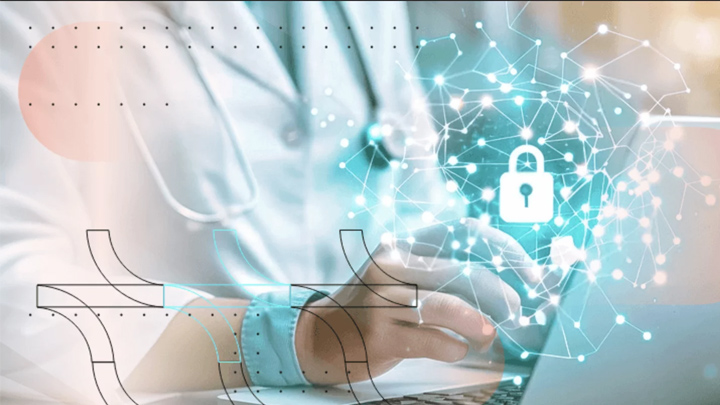
Protection of health data includes the processes of authentication and authorization, but what exactly do these terms mean?
Authentication is the process of verifying the identity of any user who wishes to access the system. It is based on the identity of the user. The minimum requirements for authentication are the user ID and password.
Authorization (or access control) is a process of granting permission for access or for performing an action. There is an access control list that contains the user’s identity and the level of their access. [8]
Encryption and anonymization techniques
Encryption is a technique to transform data for safe transfer and storage. It is an additional security layer for sensitive patient information. Encryption uses algorithms to convert original data into a coded form.
There are two main types of encryption techniques – symmetric and asymmetric:
- Symmetric encryption has the same key to encrypt and decrypt information. It is used between trusted parties.
- Asymmetric encryption is a method that uses a pair of keys, public and private keys. The public key encrypts data, private key decrypts it. This technology is used mainly for secured communication over the internet between two parties that do not trust each other. It is also used for digital signatures.
Anonymization is the process of removing personally identified information (PII). It makes it impossible to link data to an individual. This is particularly important for sensitive data – personal, medical, etc.
Data anonymization consists of different techniques. Data generalization is an aggregation of information into larger categories. Data masking is altering the data but keeping it usable. Pseudonymization is a technique to replace sensitive information with a unique identifier or code. [9]
Data privacy training and awareness
Training employees prevents data theft and unauthorized access. Proper training should include instructions about handling potential threats, securely working with PII, and understanding authentication methods.
An important part of employee training is implementing data privacy awareness. Employees must become more vigilant about identifying potential threats and follow the data security standards. It promotes a better decision-making process for handling personal data.
Another key topic in employee training is education about regulations and compliance. Under Article 39 of GDPR, every organization is obligated to provide employee training on data protection principles and privacy regulations. This is a proactive measure to protect privacy rights.
The consequences of non-provision of data privacy training are serious. Financial losses may be related to breach mitigation, lost business, and legal fees. Reputation damages are a real threat. Consumers’ or patients’ trust is hard to rebuild once it is lost. Needless to say, noncompliance with privacy laws such as GDPR results in penalties and fines. [10]
Compliance monitoring and auditing
Compliance monitoring is the process of continuous assesment of adherence to regulatory requirements. This is an important part of cybersecurity as failure to follow regulations results in significant consequences. Compliance monitoring helps manage risks and make decisions in real-time.
Monitoring may be internal or to be outsourced to providers. In-house (or internal) compliance monitoring provides high control and customization for aligning with a certain organization. The initial financial investment for this type of system may be huge but costs lower after that.
Third-party compliance monitoring solutions are done by special providers. They keep up with the evolving regulations and industry standards. Third parties provide frequent updated compliance reports and real-time visibility of compliance status. Outsourcing compliance monitoring may be beneficial for the company. It gives security and allows focus on core activities.
A hybrid approach to compliance monitoring can be implemented. It combines in-house and third-party tools and resources. This means that the organization benefits from both individual expertise and unbiased software for balancing needs and potential. [11]
Compliance audits are thorough reviews of an organization’s adherence to frameworks and regulatory requirements. They are performed by independent audit practitioners. Audits are based on specific regulations and deeply evaluate the company’s compliance. At the end of every audit, there is a report, assessment, or an audit opinion.
Compliance audits aim to research the organization’s degree of compliance and protect it from risks. As they are formal and executed by unbiased professionals, audits are objective. This means that they can guide future opportunities for improvement.
Internal audits and compliance audits may be concurrent. They can verify the findings and improve processes and results. Internal audits may also be performed before compliance audits. This may help prepare for possible responses and remediation plans.
There are different types of compliance audits. ISO, the International Organization for Standardization, publishes international standards for various industries. The ISO 27000 family of standards addresses information security and privacy. Centers for Medicare and Medicaid Services (CMS), addresses Medicare and Medicaid regulations. [12]
Discover how we can help outsource Healthcare projects efficiently Speak to an expert today, and see how our on-demand IT talent and augmented teams can efficiently deliver value at every step of your roadmap.

Emerging tools for data privacy in healthcare
Data privacy must be tailored to suit modern-day cyber and physical threats. Privacy protection evolves with new technologies.
In 2020, a team from the University of Iowa developed a decentralized machine learning platform – ImagiQ. This platform allows institutions to share algorithms without exchanging patient data. This addresses issues associated with traditional centralized databases, such as healthcare data protection and ownership concerns.
Additionally, researchers from the University of Pittsburgh are advancing federated learning (FL) methods. They enable AI model training on local data without sharing it. This technology however still faces challenges like data harmonization and missing data.
There are special privacy-enhancing technologies (PETs) tailored for healthcare. PETs are of different types. Algorithmic PETs are techniques like encryption and differential privacy that alter data representation. Architectural PETs are classified as tools with federated learning and blockchain, that focus on data structure rather than representation. Augmentation PETs are tools that create synthetic data to enhance existing datasets. [13]
AI-based privacy protection models emerge to keep the security with the trends. FL, for example, is a machine-learning approach for training of algorithms across multiple decentralized devices or servers while keeping data localized. This leads to models that perform better across diverse patient populations.
Differential privacy is a technique used to ensure the privacy of individuals with a mathematical approach. It adds randomness or noise to sensitive data. This technology allows researchers to analyze sensitive patient data while protecting individual privacy.
Cryptographic techniques are also applicable. They encrypt data prior to training and testing. Secure Multi-Party Computation (SMPC) is a cryptographic technique that allows each participant to contribute their data without revealing it to others. SMPC allows parties to work together on computations with no risk of secure breaches.
Homomorphic Encryption (HE) is a form of encryption for performing computations on encrypted data without decrypting it first. With HE the risk of exposure to vulnerabilities is minimized. It is used to store sensitive data in the cloud and perform computations without exposing the data to the cloud provider. [14]
Blockchain technology has significant potential in healthcare privacy and security. Blockchain creates an immutable, decentralized log of patient data. Information remains transparent and individuals’ identities are protected through complex encryption.
Blockchain technology helps identify critical errors in medical histories and ensures safe storage of medical transactions and clinical data. It enhances transparency in clinical trials and helps prevent manipulation of data. Blockchains can safeguard patient medical data in telemedicine by preventing unauthorized access.
Features that are implemented in blockchains include working as a communication layer for business process management. They eliminate third parties and make the healthcare organization the owner of all the data generated. [15]
In conclusion, healthcare data privacy is a critical concern that needs to be addressed in modern ways. It should be prioritized, complied with regulations, and embraced in the complexity of the healthcare industry.
Sources
[1] Abouelmehdi, K., Beni-Hessane, A. & Khaloufi, H. Big healthcare data: preserving security and privacy. J Big Data 5, 1 (2018). https://doi.org/10.1186/s40537-017-0110-7
[2] https://ncvhs.hhs.gov/wp-content/uploads/2019/07/Report-Framework-for-Health-Information-Privacy.pdf
[3] Xiang D, Cai W. Privacy Protection and Secondary Use of Health Data: Strategies and Methods. Biomed Res Int. 2021 Oct 7;2021:6967166. doi: 10.1155/2021/6967166. PMID: 34660798; PMCID: PMC8516535.
[4] https://www.ncbi.nlm.nih.gov/books/NBK519540/
[5] Dias, Fábio & Martens, Mauro & Monken, Sonia & Silva, Luciano & Santibanez Gonzalez, Ernesto. (2021). Risk management focusing on the best practices of data security systems for healthcare. International Journal of Innovation. 9. 45-78. 10.5585/iji.v9i1.18246.
[6] Sonkamble RG, Bongale AM, Phansalkar S, Sharma A, Rajput S. Secure Data Transmission of Electronic Health Records Using Blockchain Technology. Electronics. 2023; 12(4):1015. https://doi.org/10.3390/electronics12041015
[7] Chen W, Chen Z, Cui F. Collaborative and secure transmission of medical data applied to mobile healthcare. Biomed Eng Online. 2019 May 20;18(1):60. doi: 10.1186/s12938-019-0674-x. PMID: 31109320; PMCID: PMC6528194.
[8] https://www.ibm.com/docs/en/wca/3.5.0?topic=security-authentication-versus-access-control
[9] https://www.k2view.com/blog/anonymization-vs-encryption/
[10] https://www.datagrail.io/blog/data-privacy/data-privacy-training-for-employees/
[11] https://www.ibm.com/topics/compliance-monitoring
[12] https://www.auditboard.com/blog/compliance-audit/
[14] Yadav N, Pandey S, Gupta A, Dudani P, Gupta S, Rangarajan K. Data Privacy in Healthcare: In the Era of Artificial Intelligence. Indian Dermatol Online J. 2023 Oct 27;14(6):788-792. doi: 10.4103/idoj.idoj_543_23. PMID: 38099022; PMCID: PMC10718098.
[15] https://www.infosysbpm.com/blogs/healthcare/healthcare-data-privacy-and-security-can-blockchain-come-to-the-rescue.html









